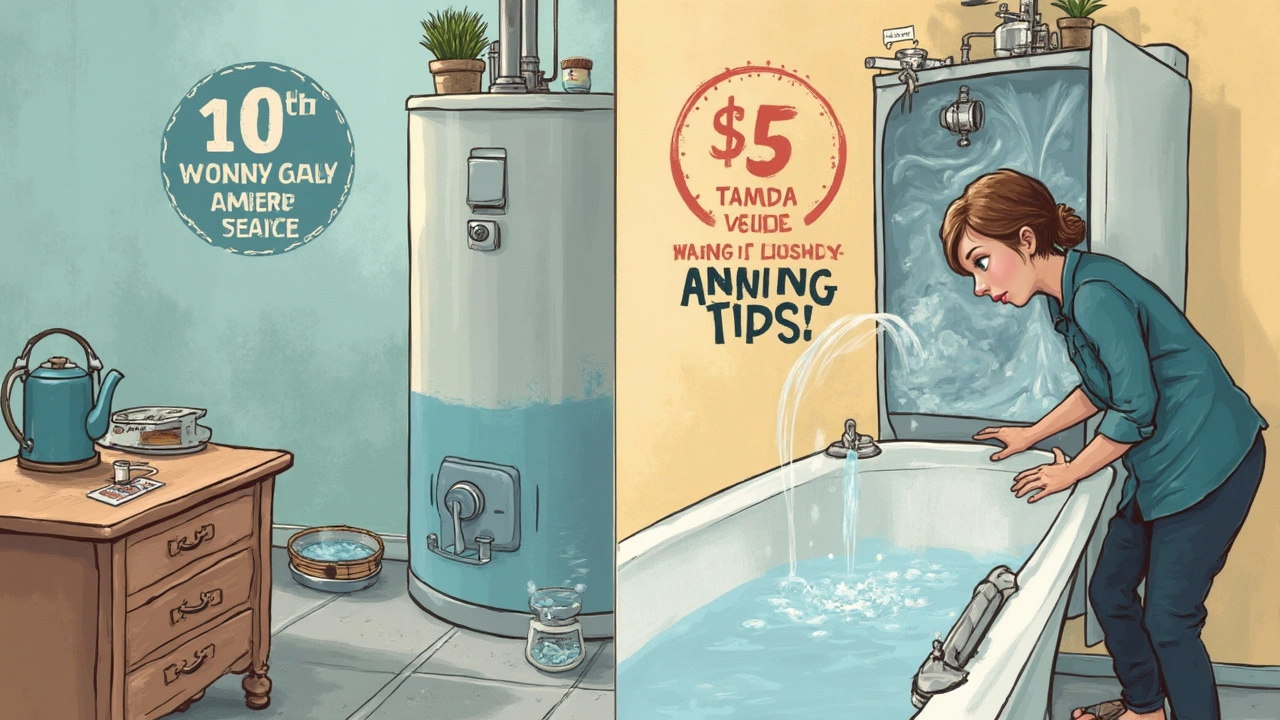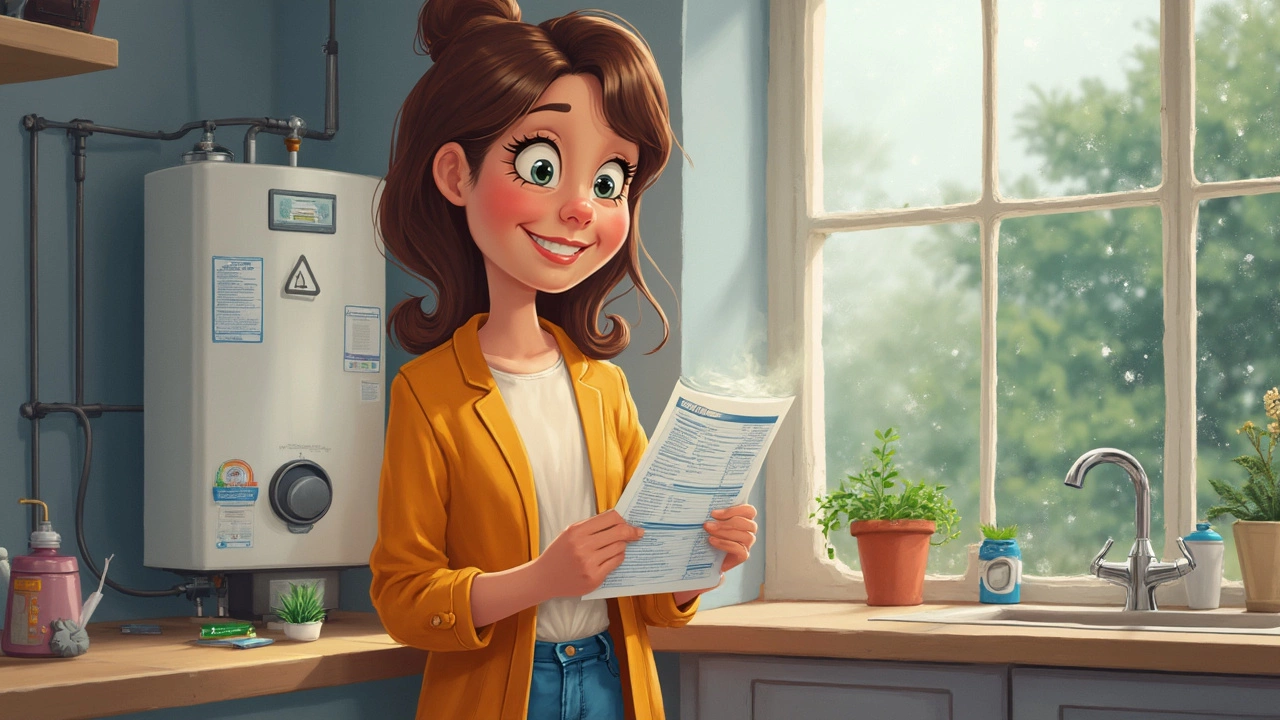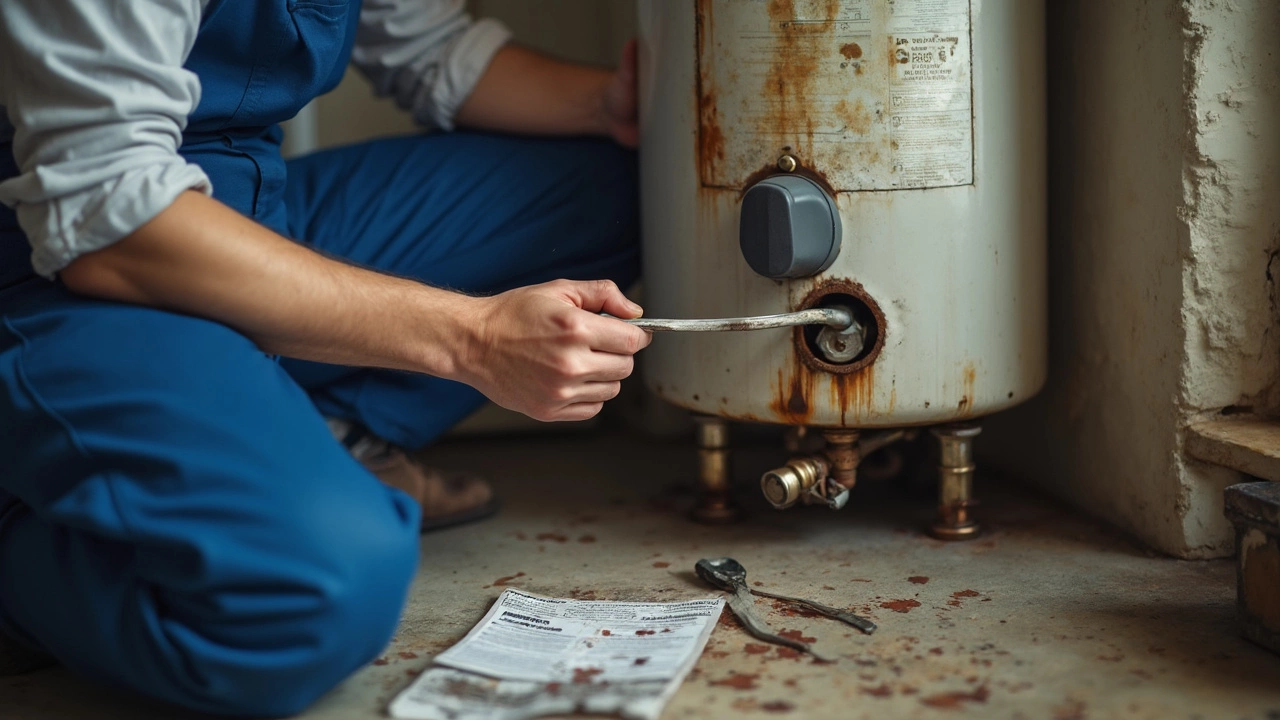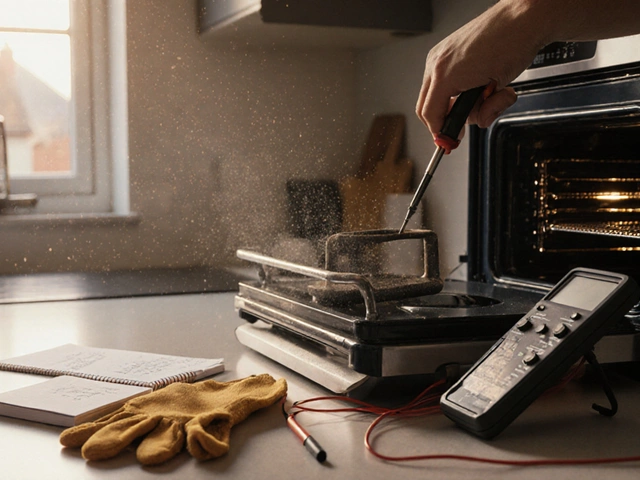A water heater that’s lasted ten years is already beating the odds—most gas units barely make it to twelve. If your tank’s survived a whole decade, you might be tempted to give it a flush and squeeze out a few more years. But should you?
Flushing is usually the best way to clear out the gunk and keep your hot water flowing. Over time, minerals and sediment pile up inside the tank, especially if you deal with hard water. This stuff messes with efficiency and can cause those weird popping noises you’ve probably heard in the morning. But here’s the kicker: the older your heater, the riskier a flush becomes.
People don’t talk about this much, but draining an old tank sometimes stirs up trouble, especially if there’s rust or a heavy layer of crud at the bottom. It’s not rare for a ten-year-old heater to start leaking after a flush, mainly if it’s never been cleaned out before. That’s because the buildup might be plugging up tiny holes or weak spots you didn’t know about. Once that gunk’s gone, leaks can show up overnight.
This isn’t a scare tactic. It’s about giving you a heads-up—know what you’re dealing with before spinning that drain valve. If the heater’s been regularly flushed all these years, a cleanup could stretch its life. But if this is the first time, you’ll want to check for warning signs (rusty water, visible leaks, a tank that sounds like a popcorn machine) before making a move.
- What Really Happens Inside a 10 Year Old Water Heater
- The Benefits (and Possible Downsides) of Flushing
- Warning Signs—Is Your Heater Too Far Gone?
- How To Flush Safely—Or When to Skip It
- Pro Tips to Keep Your Heater Running Longer
What Really Happens Inside a 10 Year Old Water Heater
If you could peek inside a water heater that's been running for a decade, you'd probably be surprised—and not in a good way. The main thing you’d find is a lot of sediment sitting at the bottom. This gunk mostly comes from hard water (loaded with minerals like calcium and magnesium) and whatever the municipal supply throws your way. As water heats up, those minerals fall out and pile up in layers. That’s the stuff that causes the annoying popping, rumbling, and weird burbling noises from your tank.
Here’s why that sediment is a big deal: it actually forms a barrier between the burner and the water, so the heating process gets less efficient. That means higher bills and more strain on all the parts inside the tank. It can also make your water slower to heat up. After 10 years, the buildup is no joke—some older tanks can have enough sludge to fill a small bucket!
Rust is another sneaky problem in older tanks. Over time, the inside lining breaks down, and the tank itself starts to corrode, especially if the anode rod (which helps stop rust) never got replaced. That rust mixes in with the sediment and can lead to rusty water or, even worse, leaks in the tank.
Check out what you might find inside a ten-year-old tank based on real-world inspections:
| What You'll See | Why It Matters |
|---|---|
| 1-4 inches sediment buildup | Can cause rumbling, heat loss, and clogging of drain valve |
| Corroded anode rod or missing rod | Faster tank rusting, shorter lifespan |
| Rust flakes mixed with sediment | Major sign of internal corrosion, weak tank walls |
| Yellow or brownish water | Rust or bacteria, not safe to ignore |
| Leaking drain valve | Sediment or corrosion wearing down seals |
The sad thing is, almost nobody checks the inside until something goes wrong. When you flush an old tank, there’s a chance you’re finally disturbing years of settled debris—and that can shake loose some problems you didn’t know were there.
Here’s the bottom line: if your flush water heater, you’re working with equipment that’s probably got way more buildup than you expected. This buildup doesn’t just make your heater noisy—it literally ages the tank faster and chokes your efficiency. So before you just open the valve and hope for the best, know what’s sitting inside your system.
The Benefits (and Possible Downsides) of Flushing
Flushing your 10 year old water heater can make a big difference—sometimes good, sometimes not so much. On the bright side, clearing out that built-up muck means your tank can heat water better and faster. Sediment at the bottom actually acts like a blanket, forcing the burner to work overtime. When you flush, you cut down on energy waste and can save a few bucks every month. In fact, the Department of Energy says a clean tank can use 10-15% less energy than a neglected one. Plus, less sediment means fewer weird noises and a lower risk of clogs in your hot water lines.
But before you run to the basement, bear in mind the downsides. On an older heater, especially if it’s never been flushed, sediment can be holding pinhole leaks or even helping block rust from spreading. Once you drain it, you might discover those leaks were just hidden. There’s also a small chance the drain valve will get stuck or break off—it gets brittle after years under pressure and heat. If your heater’s already showing its age—with rust, drips, or that burnt-egg smell around the base—flushing could push it over the edge.
To keep things clear, here’s a breakdown of what you’re getting into:
| Aspect | Potential Benefit | Possible Downside |
|---|---|---|
| Efficiency | Lower bills, faster heating | — |
| Tank Health | Removes corrosive sediment | Can expose weak spots |
| Noise | Quieter operation | — |
| Valve Condition | — | Valve can leak or break if old |
| Leaks | May prevent bursts if regularly flushed | Could cause leaks if gunk was plugging holes |
So, the real win with flushing is for those who kept up on maintenance every year or two. If your heater is a decade old and you’re flushing for the first time, weigh the risks. Got proof it’s been serviced before? Odds are you’ll be fine. Is this its first flush ever? You might want to prepare for bad news—at least keep a mop handy just in case.

Warning Signs—Is Your Heater Too Far Gone?
Don’t just go after your old water heater with a wrench and a prayer. Before you even think about flushing, you’ve got to check for red flags. Ignoring these signs can mean wasting time or even flooding your garage.
Let’s go through the most common warnings your ten-year-old tank might be on its last legs:
- Rusty Water: If you’re seeing brown or rusty water when you run hot taps, your tank could be rusting from the inside. It’s one of the clearest signs your water heater is breaking down.
- Weird Noises: Loud popping, banging, or rumbling almost always means thick sediment has built up. A little noise is normal, but it shouldn’t sound like fireworks in there.
- Leaks: Any water pooling around the base spells trouble. Even a little drip could get worse fast after flushing and signal a fatal crack in the tank.
- Lukewarm Water: When your water can’t get hot or cools off too fast, the heating element is probably struggling because of sediment buildup.
- Age: If your heater’s over ten years old and showing any of these signs, repairs probably aren’t worth it. Replacement could save you from a headache down the road.
Here’s a quick cheat sheet with the most telling warning signs and what they usually mean:
| Warning Sign | What It Means | Should You Flush? |
|---|---|---|
| Rusty water | Internal rust, possible tank failure | Usually not safe |
| Loud popping noises | Heavy sediment layer | Proceed with caution |
| Leaking tank | Likely cracked or corroded | Don’t flush—replace it |
| Lukewarm or short hot water | Sediment covering element | Only flush if no leaks |
| Heater is >10 years old | End of average lifespan | Inspect for other issues first |
Here’s the bottom line: If you spot leaks or see rusty water from your hot tap, it’s almost always time to call it quits. Trying to flush when your tank is already failing can push it over the edge. Be honest with what you see—sometimes, skipping the flush is the smartest move for an aging flush water heater that’s done its job.
How To Flush Safely—Or When to Skip It
Before you start messing with your water heater, inspect it for leaks, rust around the base, or water pooling underneath. If you spot any of these, forget flushing. Trying to drain a tank that’s already corroded is almost a guaranteed way to spring a leak and wind up shopping for a new one way sooner than planned.
If your tank looks solid and you don’t see those red flags, go ahead. Here’s what you’ll need: a garden hose, a bucket (just in case), and about half an hour. Don’t skip safety—turn off the power to the heater (electric or gas) and let the water cool down so you don’t get burned.
- Turn off the water heater’s power (breaker for electric, gas valve for gas models).
- Shut off the cold water supply to the tank.
- Attach your garden hose to the drain valve at the bottom and run the other end outside or to a floor drain.
- Open a hot water tap nearby (bathroom or kitchen) so air can flow in and help the tank drain.
- Carefully open the drain valve—watch out, old valves can be brittle and sometimes snap off.
- Drain a few gallons at first. If the water is full of muck, keep draining until it runs mostly clear.
- Once you’re done, close the valve, remove the hose, and turn the cold supply back on. Leave a hot tap open till you’re sure the tank’s full and there’s no air left in the pipes before you flip the power back on.
Sound easy? It mostly is, unless the drain valve refuses to budge or nothing comes out (which means sediment may have clogged the opening). For an old tank that hasn’t been flushed in years, the flush water heater trick is often more risky than rewarding. If the valve feels stuck, don’t force it. Get a plumber involved instead—you don’t want to break the valve off and create a mess you can’t fix yourself.
Here’s a tip: if you’re at all uneasy, or if your tank is making weird noises long after draining, cut your losses and call a pro. Sometimes, skipping the flush on a really old heater is just smarter. Better safe than sorry with a tank that’s past its prime.

Pro Tips to Keep Your Heater Running Longer
If your heater’s at the ten-year mark, you want to get every last mile out of it before it kicks the bucket. The good news—you don’t need fancy tools or a plumbing background to pull off some solid maintenance moves.
- Flush water heater at least once per year if your water isn’t extremely rusty or you don’t see obvious leaks. This slows sediment buildup, which makes the heater work harder and may lead to early breakdowns. If you’ve never flushed it before and your heater’s old, flush a few gallons at first—don’t go for a full empty right away.
- Check the temperature setting. There’s no need to cook your hands just to kill germs. Set your thermostat around 120ºF. Anything higher wastes energy and adds wear on heater parts.
- Look at the sacrificial anode rod every couple of years. This rod attracts corrosion away from the tank metal, but it gets eaten up in the process. If it’s looking thinner than a pencil or super crusty, swap it out. This single step can buy you extra years.
- Insulate the pipes connected to your heater, especially if they run through a cold garage or crawl space. You’ll have hotter water faster and your tank won’t work as hard to keep up with demand.
- Keep the area around your heater clean and free from clutter. Dust and debris mess up airflow, which can hike up the risk of overheating, especially for gas units.
If the heater starts acting weird—like water gets smelly, rusty, or you hear loud banging—don’t ignore it. Get these dealt with early instead of waiting for a total meltdown. Spending a little time and effort now can stretch out the lifespan of your heater and keep those surprise cold showers at bay.





